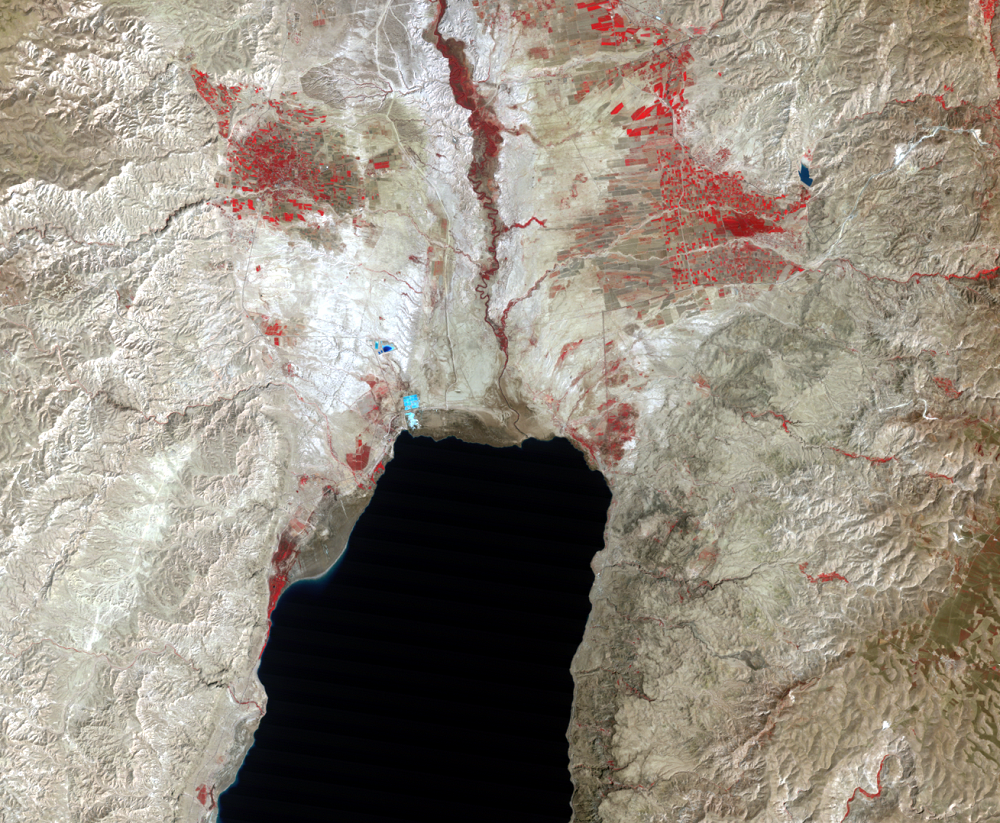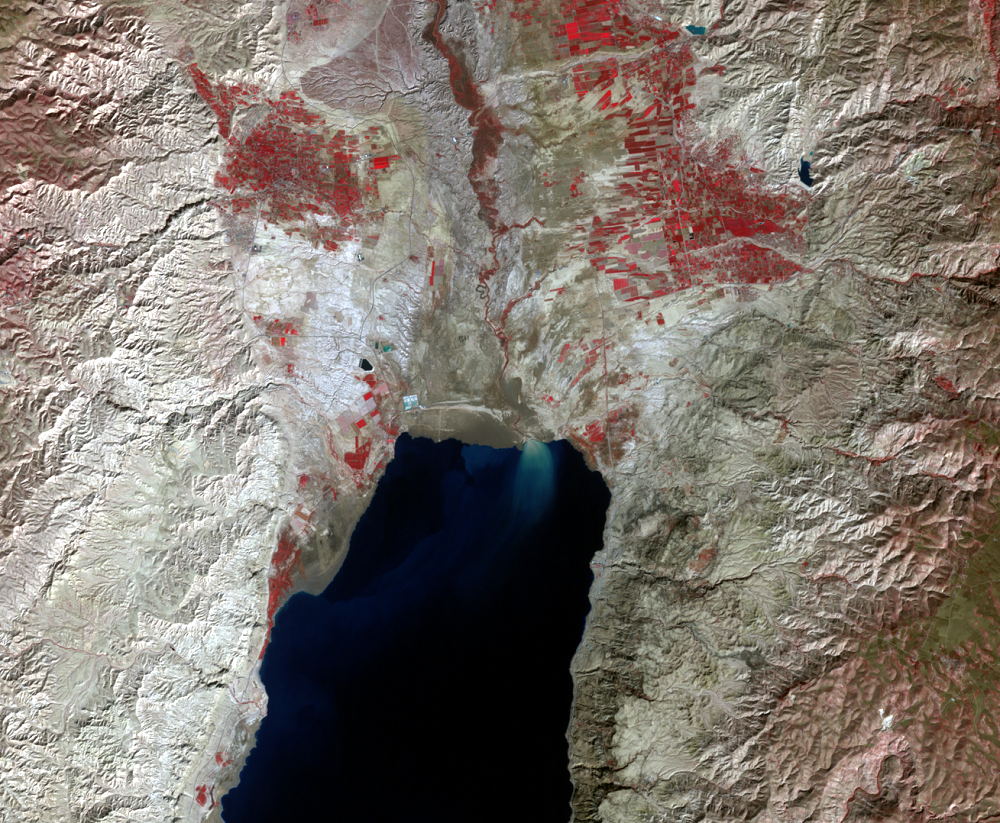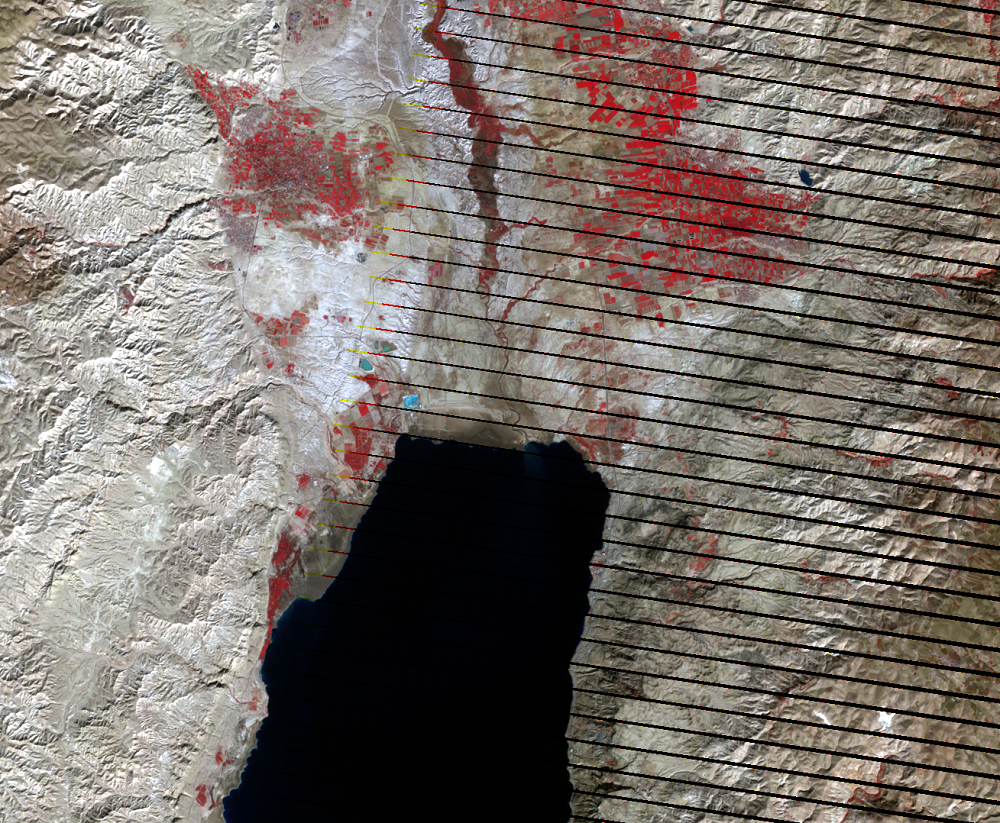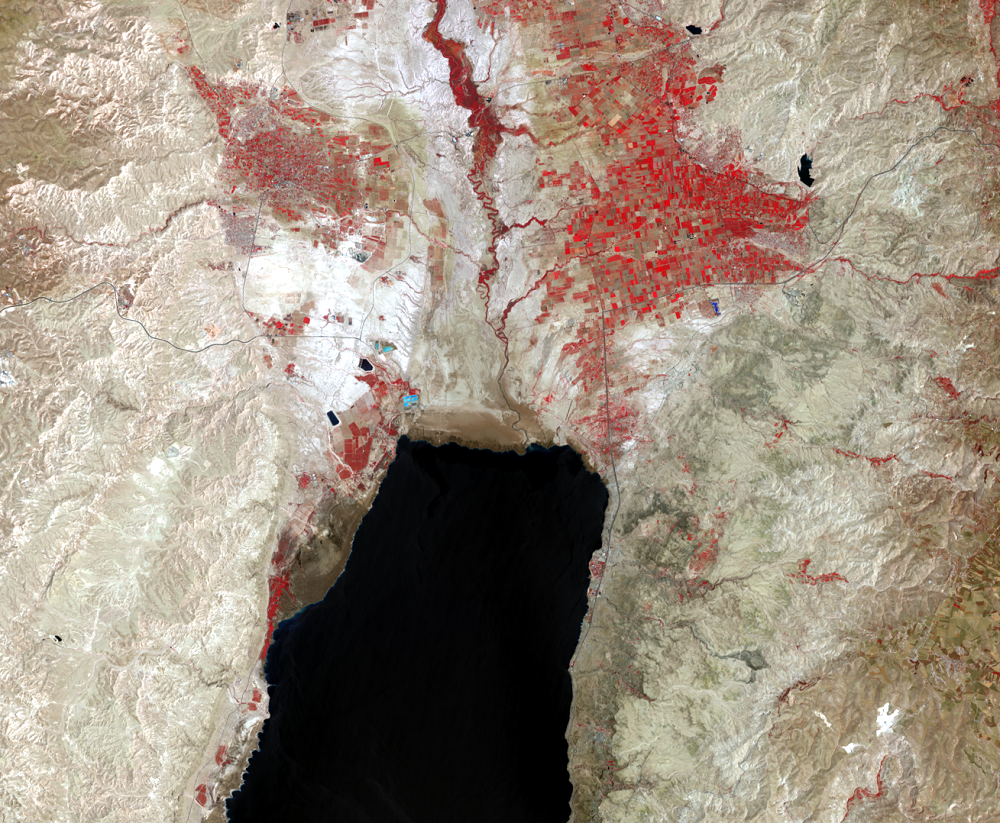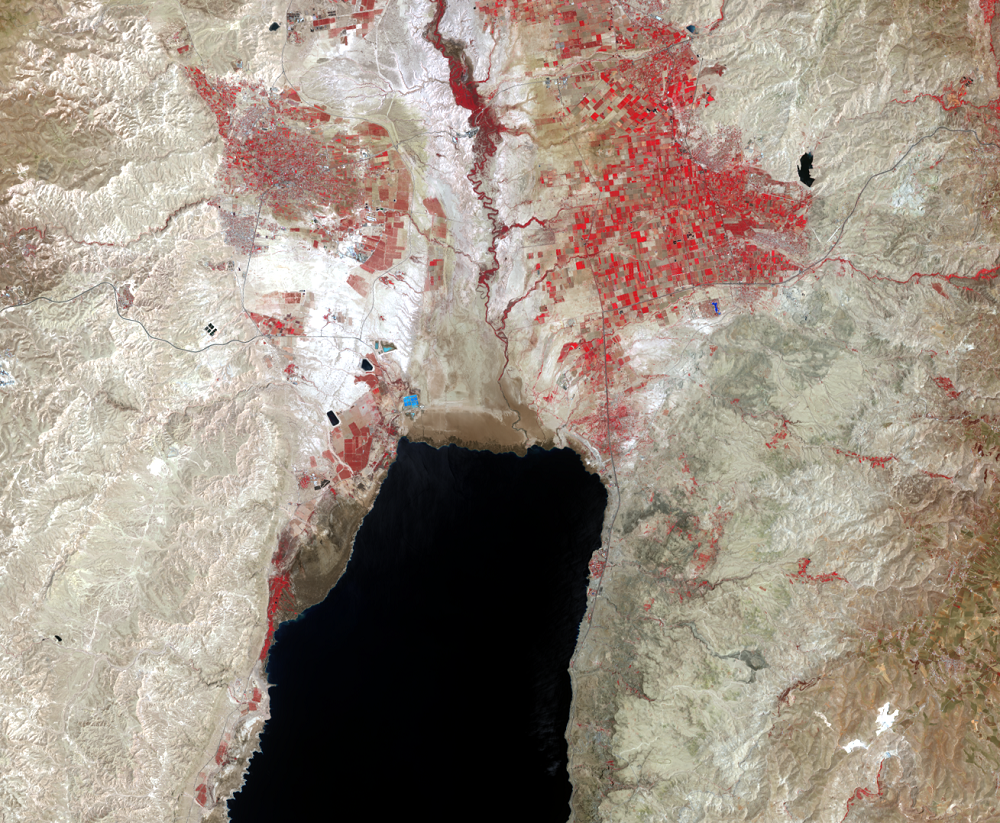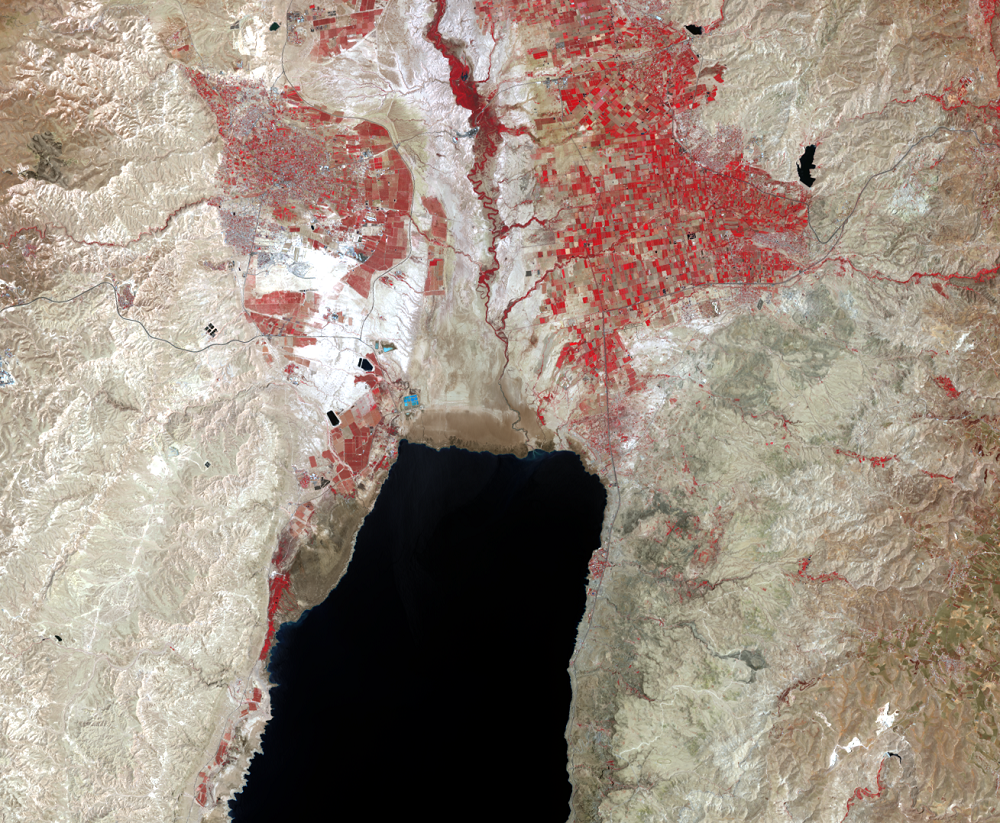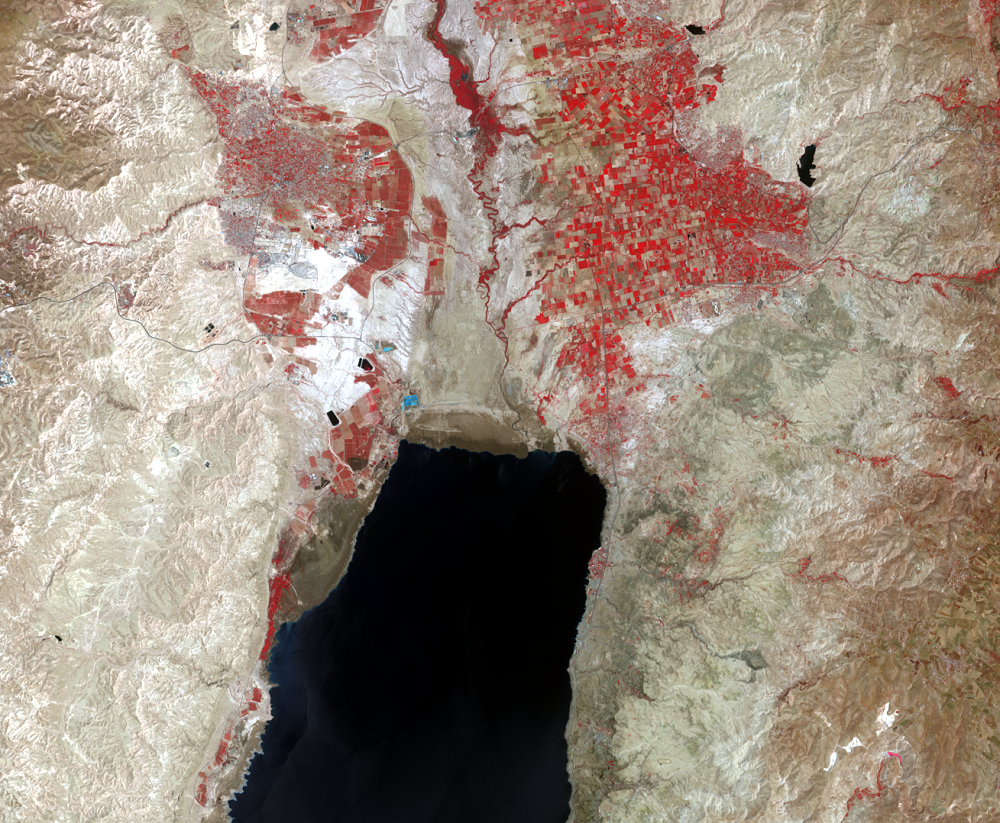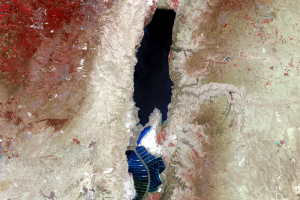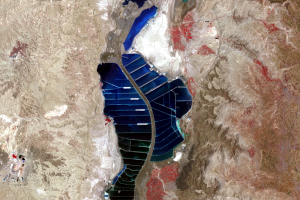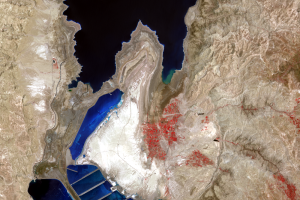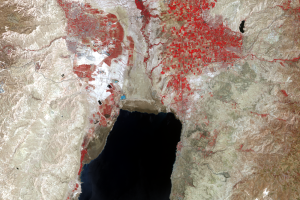
Rates of Decline
Earth Resources Observation and Science (EROS) Center - Earthshots
The Dead Sea is fed mainly by the Jordan River, which enters from the north. Because of irrigation projects and other water needs upstream, the level of the Dead Sea has been falling.
Much less water now enters the sea from the Jordan River. The river once brought 1.3 billion cubic meters of fresh water every year into the sea. Now it brings only about 100 million cubic meters, most of it containing agricultural runoff and sewage. These water uses have a bigger impact on Dead Sea levels than rainfall, which only amounts to an average of about 50 millimeters annually.
Over the past 50 years, the level of the Dead Sea has dropped by 45 meters, and the rate of decline is increasing. From 1930 to 1973, the sea declined 17 centimeters per year. From 1974 to 1979, it dropped 62 centimeters per year, and from 1981 to 1990, 79 centimeters per year. From 1994 to 2001, the sea declined 100 centimeters per year. A 2018 report by Israel’s Ministry of Environmental Protection notes a rate of decline of 1.2 meters per year.
As the water level continues to drop, the water only gets saltier. There is even a layer of salt coating the lake bottom, which has been growing about 10 centimeters thicker every year.
To make matters worse, as the water retreats, sinkholes form in the salty seabed that is left behind. Studies have inventoried the sinkholes along the coast of the Dead Sea and found that the sinkholes are increasing in number, making development on this land hazardous.


